For Families
 Keep your child safe
Keep your child safe
Your primary aged child is still developing an understanding of danger and safety. While they are often keen to do things for themselves, an adult must always be responsible for your child in the traffic environment.
Your child is a vulnerable road user. They are still developing the skills that help them to judge the direction of sound and the speed and distance of vehicles. Your child is physically small, making it harder for drivers to see them. They may be easily distracted and tend to only be able to focus on one thing at a time. This means that they find it difficult to deal with sudden changes in the traffic environment.
Your child may be able to tell you the rules and how to keep safe near in and around vehicles, but in reality, will not always be able to apply them.
Read the road safety information below about how to help keep your child safe. Share the information with all of the adults who care for your child.
Also take some time to explore and talk about the Safety Town activities with your child.
Watch the Minister for Regional Transport and Roads, Jenny Aitchison, explain the unique approach NSW takes to road safety education.
Key Road Safety Messages
At school, your child learns about road safety as part of Personal Development, Health and Physical Education (PDHPE). Help them practise the road safety messages they learn at school by using and sharing them whenever you are out and about.
Pedestrian safety


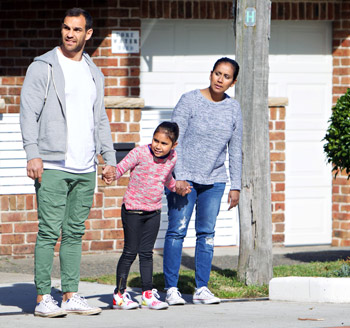 At school, your child will learn about road safety as part of Personal Development, Health and Physical Education. Help them learn the pedestrian safety messages by using them and sharing them whenever you are out and about.
At school, your child will learn about road safety as part of Personal Development, Health and Physical Education. Help them learn the pedestrian safety messages by using them and sharing them whenever you are out and about.
Students in Early Stage 1 and Stage 1
- Hold a grown-up's hand when
- you cross the road
- you're on the footpath
- you're in the car park
Students in Stage 2
- Hold an adult's hand when you cross the road
- Use a safe place to cross the road
Students in Stage 3
- Stop! Look! Listen! Think! every time you cross the road
- Use a safe place to cross the road
Find out more about keeping your child safe in the road enironment in our fact sheets.


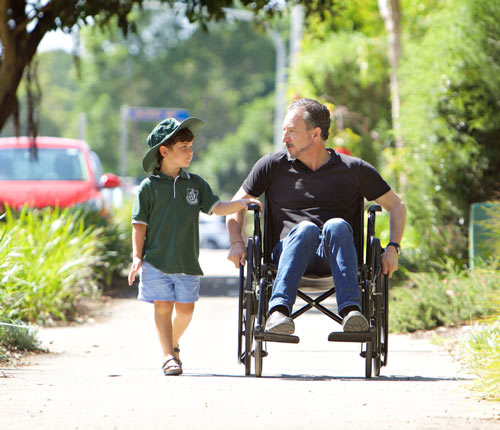 Starting school means lots of changes for you and your child. It is crucial to plan and talk about safe travel to and from school with your child.
Starting school means lots of changes for you and your child. It is crucial to plan and talk about safe travel to and from school with your child.
Starting school probably means your child will see themselves as a “big kid”. They may even want to travel to school by themselves, with friends or siblings. However, your young child is still developing many of the skills they need to be safe in a road traffic environment.
Until your child is at least 8 years old, hold their hand:
- on the footpath
- in the car park
- when crossing the road
Then, up until at least 10 years old, supervise your child very closely, holding their hand when crossing the road. If a hand isn’t available they should hold an arm, bag, clothes or the pram.
In the early years of your child's schooling, there are many road safety considerations for you to think about.
The route to and from school may be unfamiliar
Plan a safe route together and practice walking it on weekends or school holidays. As you walk together, talk about all the things you are doing to keep you both safe.
Most journeys to and from school are in peak hours
Roads are full of people and vehicles. The roads around schools are busy places and can make the journey to school hazardous. Always closely and actively supervise your child. Hold hands together when walking on the footpath and crossing the road. You should do this until they are at least ten years old.
The beginning and end of the school day can be hectic
Entering or leaving the school can be a source of great excitement or even stress! Your child may not be focused on their own safety. Arrange a safe place to meet inside the school grounds or on the school side of the road. Never call your child across the road.
Using and sharing pedestrian road safety messages
At school, your child will learn about road safety as part of Personal Development, Health and Physical Education. Help them learn the pedestrian safety messages by using them and sharing them whenever you are out and about.
Hold a grown-up's hand when you're:
- on the footpath
- in a carpark
- crossing the road
Find out more about keeping your child safe in the road enironment in our fact sheets.


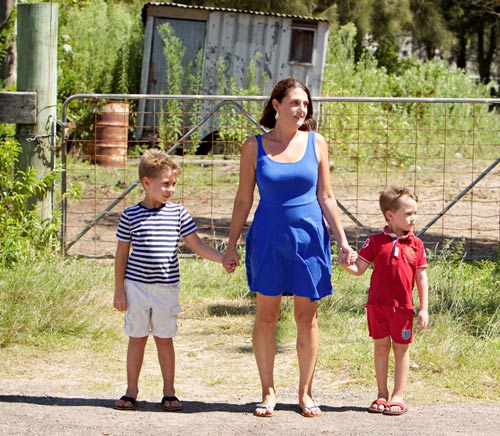 You probably already know that your child can easily be distracted! As a pedestrian, they are small and can be difficult for drivers to see. Developmentally, your primary aged child is still learning the skills to predict or identify dangers, judge speed and know which directions sounds come from. They tend to act impulsively too.
You probably already know that your child can easily be distracted! As a pedestrian, they are small and can be difficult for drivers to see. Developmentally, your primary aged child is still learning the skills to predict or identify dangers, judge speed and know which directions sounds come from. They tend to act impulsively too.
You are responsible for your child's safety. Talk with your child about safe behaviour on the footpath. It is not a safe place to play. Discuss the dangers of vehicles that may be entering or exiting driveways.
Until your child is at least 8 years old, hold their hand:
- on the footpath
- in the car park
- when crossing the road.
Then, up until at least 10 years old, supervise your child very closely, holding their hand when crossing the road. If you cannot be with your child, organise for another trusted adult to accompany them.
At school, your child will learn about road safety as part of Personal Development, Health and Physical Education. Help them learn the pedestrian safety messages by using them and sharing them whenever you are out and about.
Students in Early Stage 1 and Stage 1
- Hold a grown-up's hand when
- you cross the road
- you're on the footpath
- you're in the car park
Students in Stage 2
- Hold an adult's hand when you cross the road
- Use a safe place to cross the road
Students in Stage 3
- Stop! Look! Listen! Think! every time you cross the road
- Use a safe place to cross the road
Find out more about keeping your child safe in the road enironment in our fact sheets.


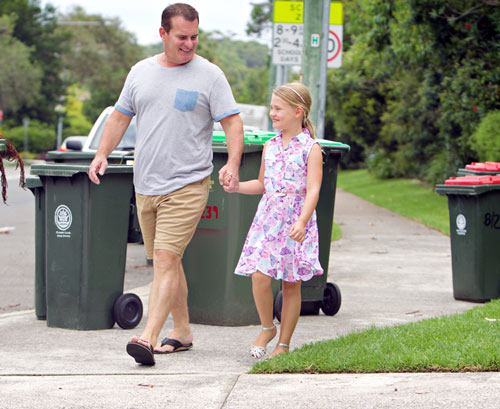 As your child gets older they are likely to want to become an independent traveller.
As your child gets older they are likely to want to become an independent traveller.
Walking to and from school with your child helps ease traffic congestion, reduces your carbon footprint, promotes physical activty and provides a talking point about road safety. The Transport for NSW website has more information on active transport.
Before allowing your child to walk to school by themselves, talk with them about the responsibility and the importance of making safe decisions. Remind them that the decisions they make will affect their safety, and that of other road users.
You know that what works for one child may not work with another. Every child acts differently around traffic. Ensure you know how your child may act or react in a changing traffic environment. This will help you to decide when to allow them to walk to school independently.
Before you let your child to walk to school independently, plan the journey together and have a practice run.
You should also ensure your child knows and understands:
- the pedestrian road rules
- their responsibility as a pedestrian towards the safety of others
- the importance of not using mobile phones and other devices in the traffic environment
- a safe, alternative way home if something changes
Other pedestrian safety tips include:
- Always use pedestrian facilities if available.
- Never assume that a driver can see you or will stop for you.
- Make sure drivers see you and have stopped before you cross the road or driveway.
- Check for turning vehicles before you leave the kerb and when crossing driveways.
At school, your child will learn about road safety as part of Personal Development, Health and Physical Education. Help them learn the pedestrian safety messages by using them and sharing them whenever you are out and about.
Students in Stage 2
- Hold an adult's hand when you cross the road
- Use a safe place to cross the road
Students in Stage 3
- Stop! Look! Listen! Think! every time you cross the road
- Use a safe place to cross the road
Find out more about keeping your child safe in the road enironment in our fact sheets.


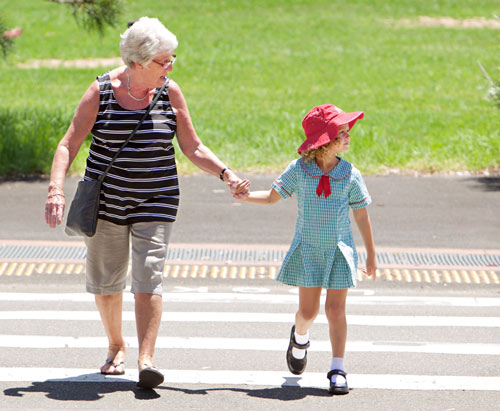
Walking to and from school with your child helps ease traffic congestion, reduces your carbon footprint, promotes physical activty and provides a talking point about road safety. The Transport for NSW website has more information on active transport.
When you walk with your child, talk about safe behaviour. Always demonstrate correct pedestrian behaviour. The best way you can help your child to be a safe pedestrian is to:
- give them lots of supervised practice with you or another trusted adult.
- talk with and teach your child about being alert in a road environment.
- always hold your child's hand.
- explain why the place you have chosen is the safest place to cross the road.
- point out dangers, such as vehicles coming out of driveways.
- use pedestrian crossings and traffic lights correctly.
- teach your child to keep turning their head in both directions to look and listen for traffic as they cross the road.
- talk with them about everything they need to think about to keep safe when walking.
- explain why they should look and listen before crossing a driveway, road or carpark.
- talk with your child and reinforce Stop! Look! Listen! Think! every time you cross the road together
STOP! one step back from the kerb.
LOOK! continuously look both ways.
LISTEN! for the sounds of approaching traffic.
THINK! whether it is safe to cross.
Walking together also helps you to observe if older children are ready to cross the road independently.
At school, your child will learn about road safety as part of Personal Development, Health and Physical Education. Help them learn the pedestrian safety messages by using them and sharing them whenever you are out and about.
Students in Early Stage 1 and Stage 1
Hold a grown-up's hand when:
- you cross the road
- you're on the footpath
- you're in the car park
Students in Stage 2
- Hold an adult's hand when you cross the road
- Use a safe place to cross the road
Students in Stage 3
- Stop! Look! Listen! Think! every time you cross the road
- Use a safe place to cross the road
Find out more about keeping your child safe in the road enironment in our fact sheets.


You and your child should always use a pedestrian crossing if there is one available. It is the safest point at which to cross a road. Share how to use the different pedestrian crossings with your child when you are out walking together. Model the correct behaviours - they learn from you.
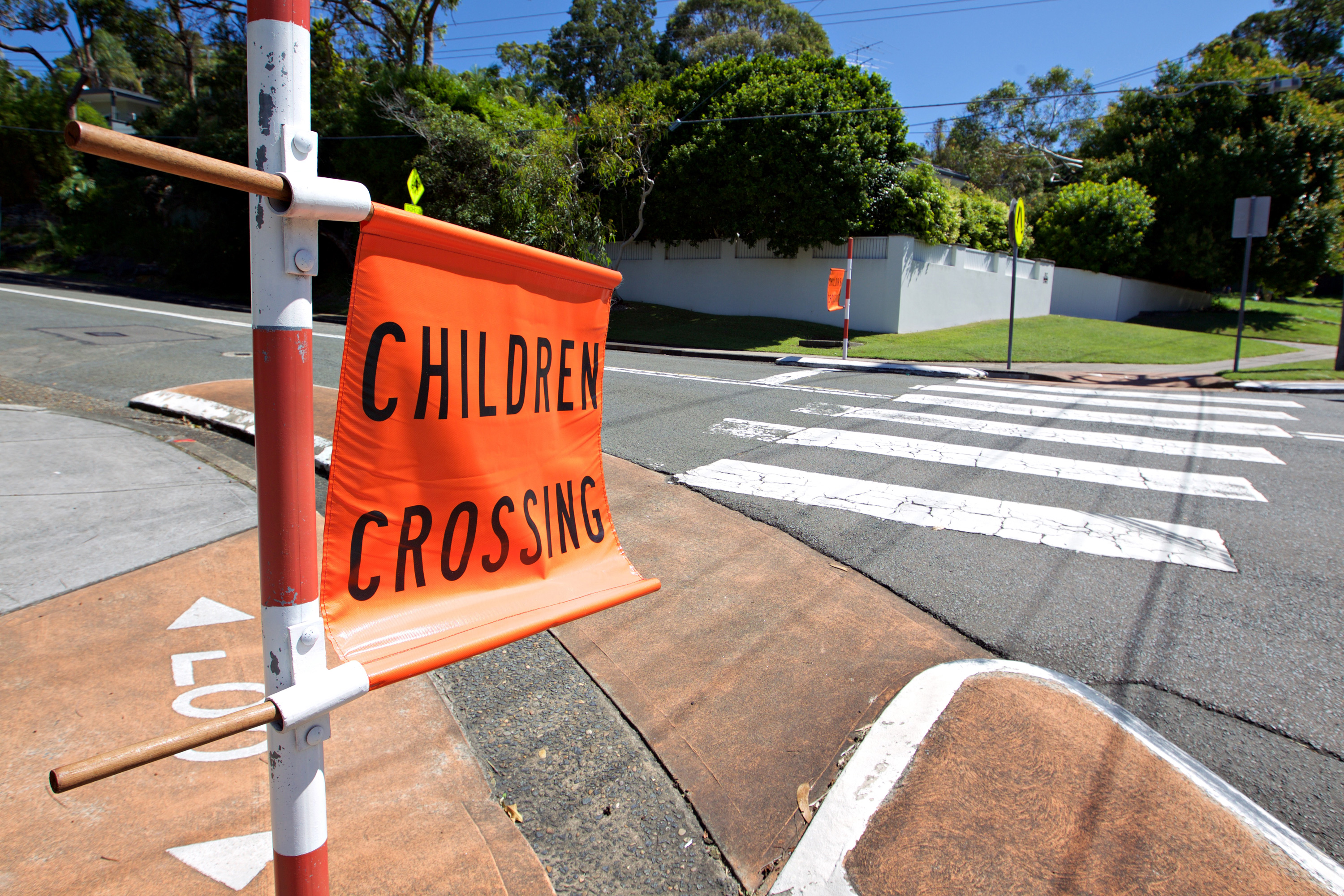 Children's crossings
Children's crossings
Children's crossings are usually part-time crossings that operate before and after school hours. They can also operate at other times when children use the crossing for excursions or during break times. When the red 'Children Crossing' flags are displayed, you must stop at the white line if pedestrians are waiting to cross. Drivers must remain stopped until the crossing is clear of pedestrians.
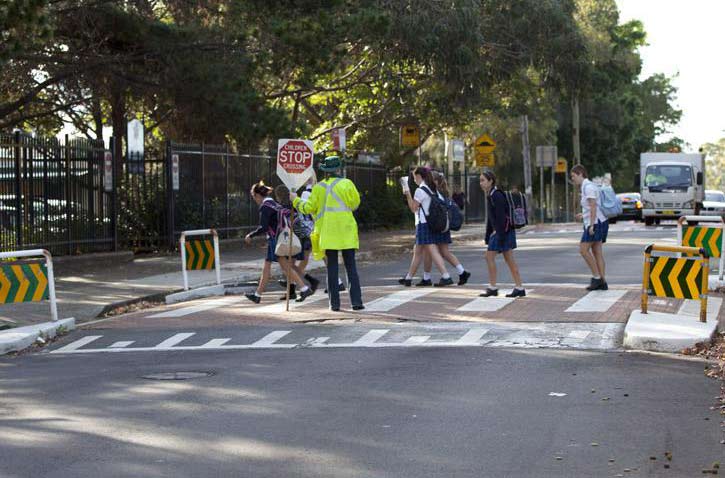
Pedestrian crossings (zebra crossings)
Talk with your child about waiting until all vehicles have stopped before starting to cross. Some drivers may not stop for pedestrians. If you are driving, you must slow down and stop when a pedestrian steps onto a marked crossing. You must give way to any pedestrian on the crossing. Crossings with poor visibility have zigzag white lines painted on the road to warn drivers.
If there is school crossing supervisor, hold hands with your child and wait together on the footpath, at least one step back from the edge of the road, until the supervisor indicates that it is safe to enter the crossing.
If you are driving, you must stop until the crossing supervisor’s hand-held sign is no longer displayed, or until the supervisor indicates that you may proceed through the crossing.
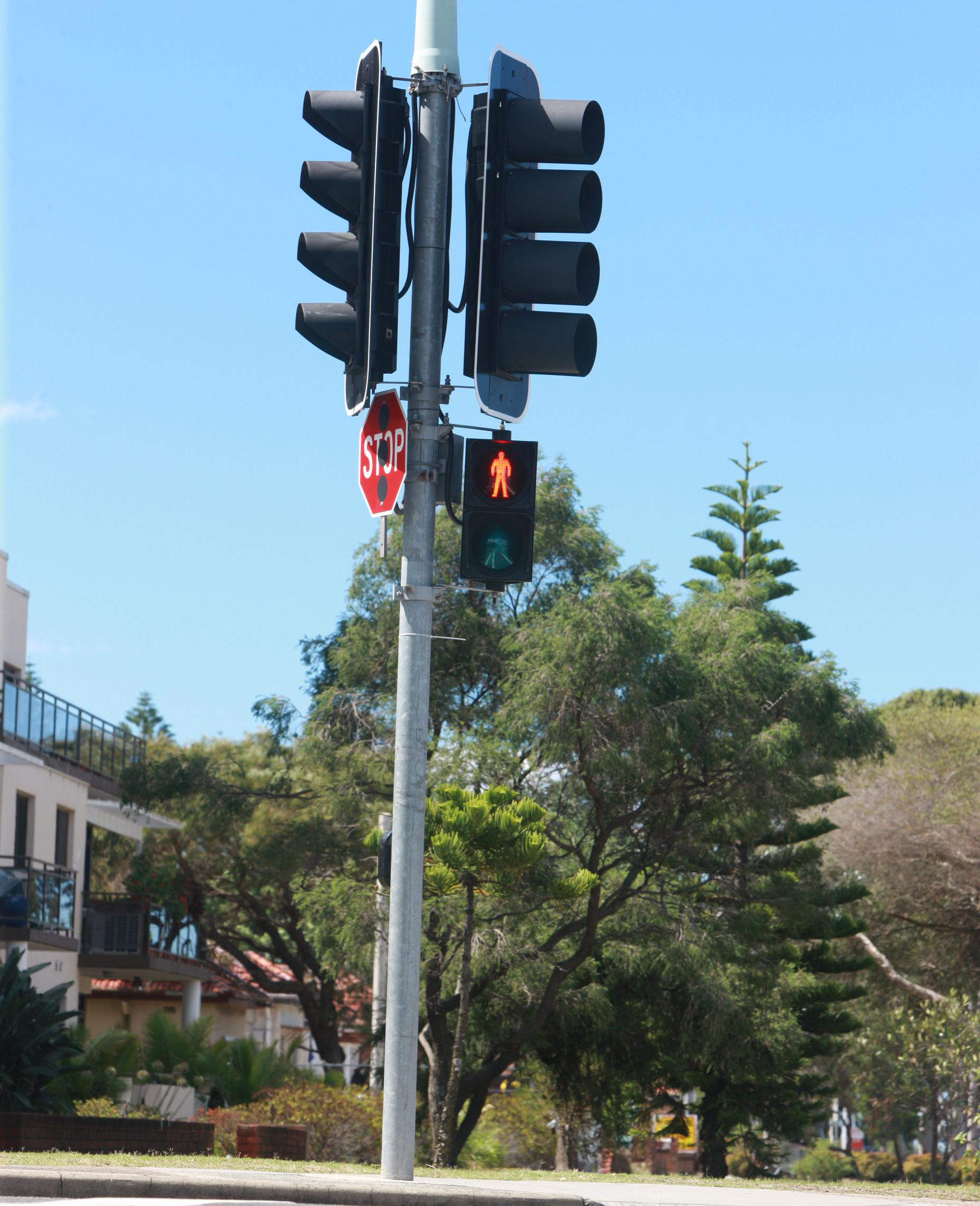 Pedestrian traffic signals
Pedestrian traffic signals
Always wait for the light to change to the green walk signal before crossing. Make sure that vehicles stop before you cross, and don't walk if vehicles are moving through the crossing or if the red don't walk signal shows. When approaching traffic lights, you must not start to cross on the flashing red don't walk signal. You must wait for the green signal before you start to cross. At some intersections, pedestrian countdown timers have replaced the flashing red man don't walk signal. The countdown timers show how many seconds you have left to finish crossing before oncoming vehicles will be given a green light. If you haven’t started to cross, the countdown timers can help you decide if it’s safe to do so.
Pedestrian refuge islands
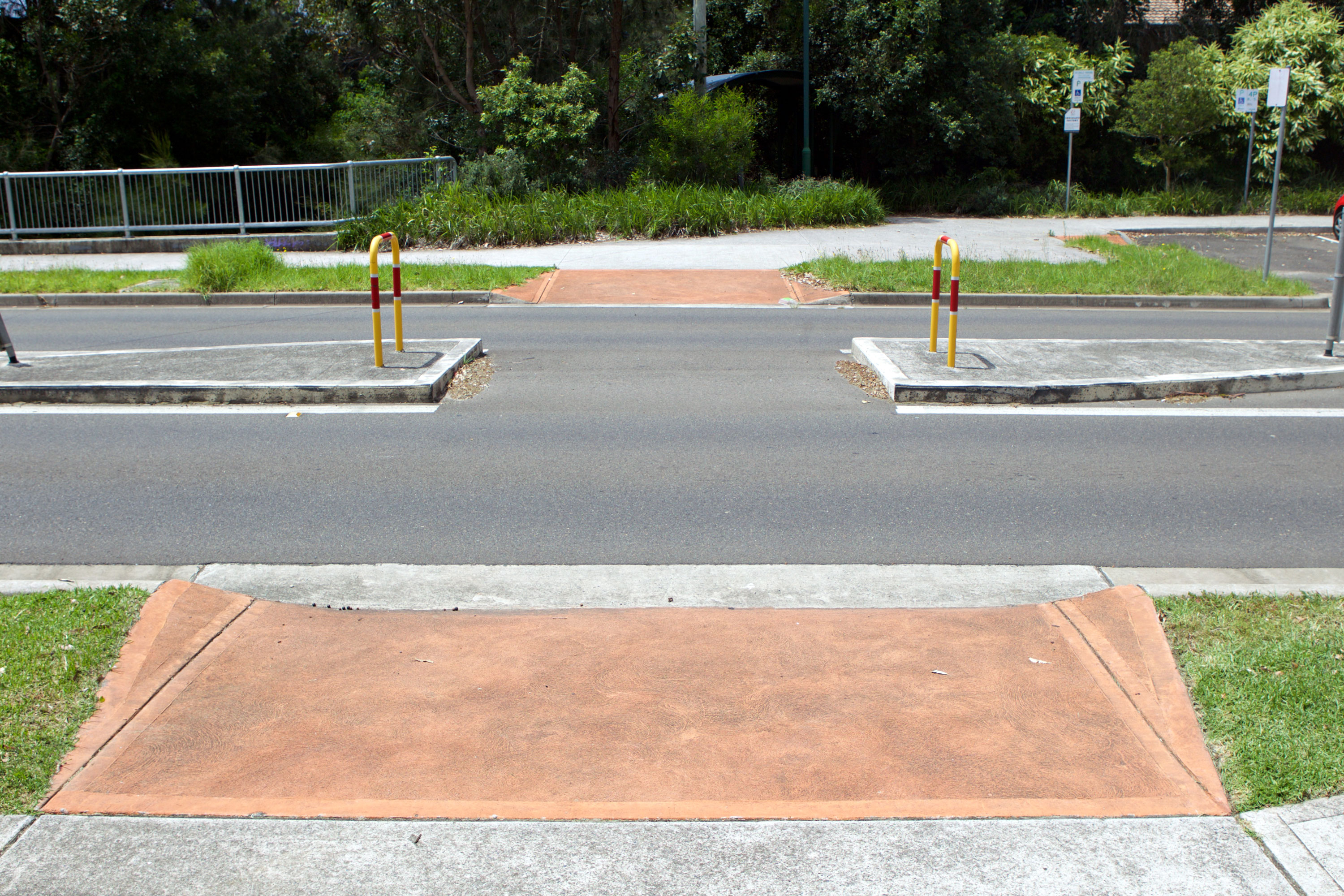 Pedestrian refuge islands are not pedestrian crossings. They are installed on busy or wide roads to help you cross in two stages. Sometimes they are used with a pedestrian crossing when a staged crossing is required.
Pedestrian refuge islands are not pedestrian crossings. They are installed on busy or wide roads to help you cross in two stages. Sometimes they are used with a pedestrian crossing when a staged crossing is required.
Find out more about keeping your child safe in the road enironment in our fact sheets.


Texting, talking or playing on the phone or other device, makes your child vulnerable when walking in the traffic environment.
While using devices, children focus their vision, hearing and concentration on the device instead of thinking about keeping safe. Your child should put away all devices before they start their journey. Talk with them about how this helps limit distractions and keeps them alert to possible dangers. It is good practice to teach your child from a young age to always concentrate when walking in the traffic environment.


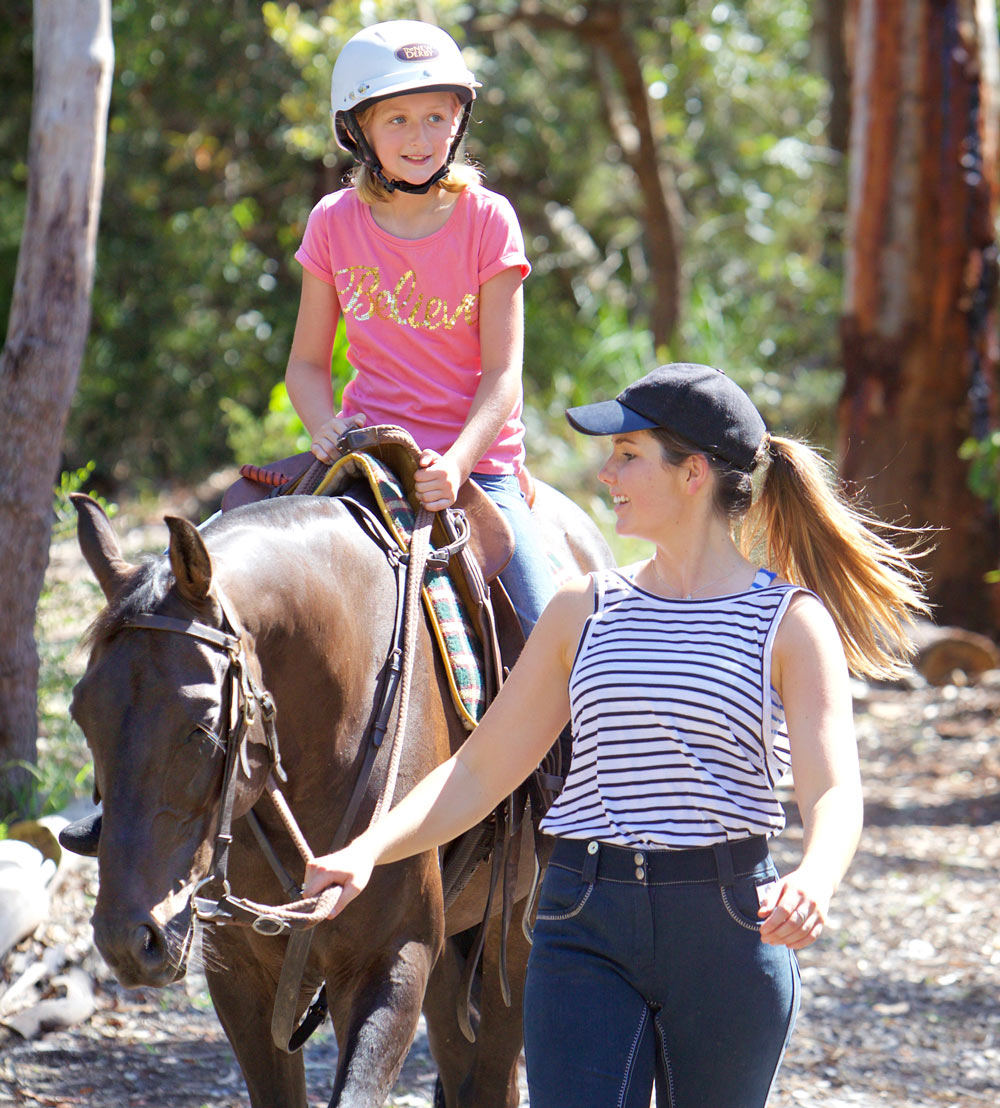 Going on holidays is an exciting time for you and your child. Travelling to different places often means new surroundings and traffic conditions. Roads, footpaths and pedestrian facilities may look different in holiday areas. Whether it's a holiday by the beach, in the city or the bush, chances are there will be different road conditions. While you may be relaxed, it is important to talk to your child about the differences in the road and traffic environment.
Going on holidays is an exciting time for you and your child. Travelling to different places often means new surroundings and traffic conditions. Roads, footpaths and pedestrian facilities may look different in holiday areas. Whether it's a holiday by the beach, in the city or the bush, chances are there will be different road conditions. While you may be relaxed, it is important to talk to your child about the differences in the road and traffic environment.
Holiday parks and camping grounds also bring their own set of road safety challenges for your child. There will be more children out walking and riding bikes and scooters. Remember:
- The best way to keep your child safe on or near the road is to hold their hand.
- Talk to your child daily about road safety.
- Remind other adults and carers about this too.
Passenger safety


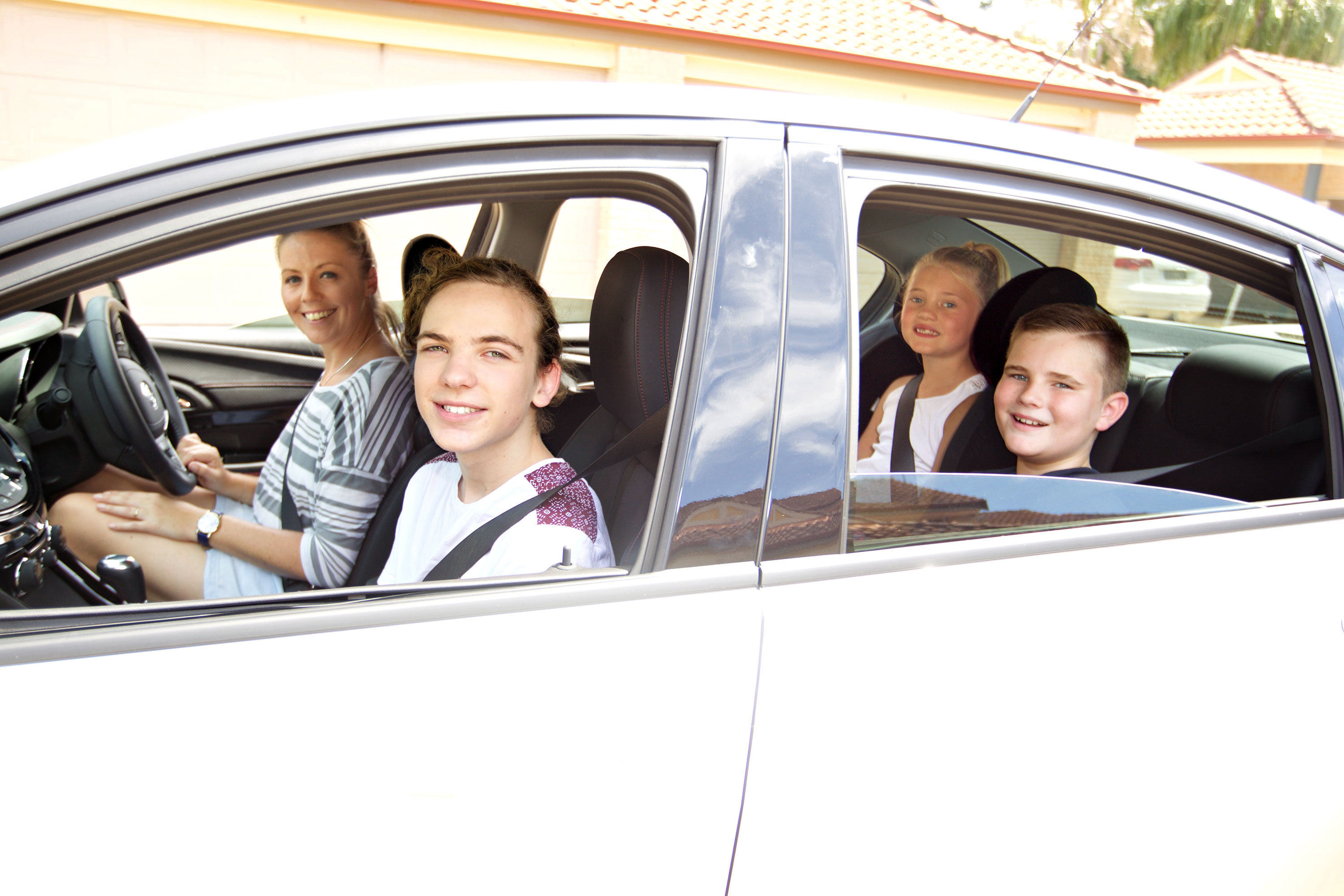 At school, your child will learn about road safety as part of Personal Development, Health and Physical Education. Help them learn the passenger safety messages by using them and sharing them whenever you are out and about in the car.
At school, your child will learn about road safety as part of Personal Development, Health and Physical Education. Help them learn the passenger safety messages by using them and sharing them whenever you are out and about in the car.
Students in Early Stage 1 to Stage 3
- Click clack front and back
- Always buckle up safely
- Get in and out of the car on the footpath side
- Wait till the bus has gone and then use a safe place to cross
Find out more about keeping your child safe in the road enironment in our fact sheets.


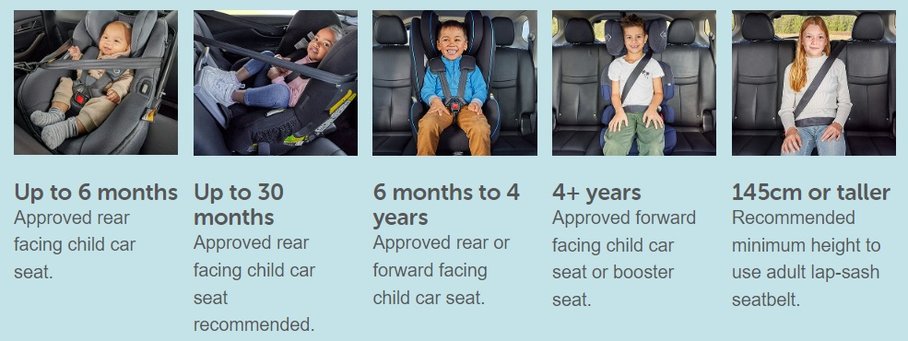
National child restraint laws
- Children up to the age of six months must be secured in an approved rearward facing restraint
- Children aged from six months old but under four years old must be secured in either a rear or forward facing approved child restraint with an inbuilt harness
- Children under four years old cannot travel in the front seat of a vehicle with two or more rows
- Children aged from four years old but under seven years old must be secured in a forward facing approved child restraint with an inbuilt harness or an approved booster seat
- Children aged from four years old but under seven years old cannot travel in the front seat of a vehicle with two or more rows, unless all other back seats are occupied by children younger than seven years in an approved child restraint or booster seat
- Children aged from seven years old but under 16 years old who are too small to be restrained by a seatbelt properly adjusted and fastened are strongly recommended to use an approved booster seat
- Children in booster seats must be restrained by a suitable lap and sash type approved seatbelt that is properly adjusted and fastened, or by a suitable approved child safety harness that is properly adjusted and fastened.
If your child is too small for the child restraint specified for their age, they should be kept in their current child restraint until it is safe for them to move to the next level.
If your child is too large for the child restraint specified for their age, they may move to the next level of child restraint.
It is recommended that children up to and including 12 years of age should always sit in the rear seat, even though children 7+ years can legally occupy the front seat of a vehicle.
Five-step test

The five-step test can help assess whether your child is big enough to be safely restrained by a seatbelt. Answering Yes to each step means your child is ready for a seatbelt. The child should be able to:
- Sit all the way back against the seat back
- Bend their knees comfortably over the front edge of the vehicle seat
- Sit with the sash belt across their mid-shoulder
- Sit with the lap belt across the top of their thighs
- Stay seated in this position for the whole trip.
Find more information about moving your child to the next type of child car seat, or from a booster seat to an adult seatbelt, as well as answers to other common questions on the Child Car Seats website FAQs section.
Follow the manufacturer's instructions carefully when fitting child car seats. If you are unable to locate the fitting instructions, contact the manufacturer or search for the instructions online.
To ensure correct and safe installation of your child car seat, have it checked at an Authorised Restraint Fitting Station.
At school, your child will learn about road safety as part of Personal Development, Health and Physical Education. Help them learn the passenger safety messages by using them and sharing them whenever you are out and about in the car.
Students in Early Stage 1 to Stage 3
- Click, clack front and back
- Always buckle up safely
- Get in and out of the car on the footpath side
Find out more about keeping your child safe in the road enironment in our fact sheets.


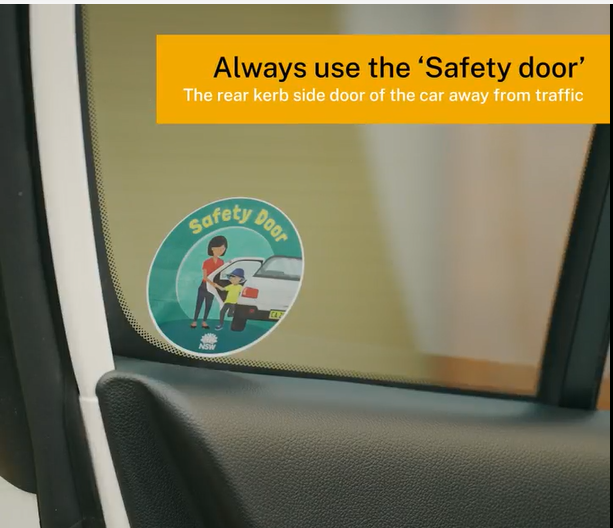 Ensure your child always gets in and out of the car through the Safety Door. This is the rear kerb-side door of the car. Never allow your child to get in and out of the car on the traffic side. Your child should remain in the car until an adult opens the Safety Door.
Ensure your child always gets in and out of the car through the Safety Door. This is the rear kerb-side door of the car. Never allow your child to get in and out of the car on the traffic side. Your child should remain in the car until an adult opens the Safety Door.
Help your child buckle up. Make sure their seatbelt is not twisted. It is a good habit to make sure all passengers are securely buckled into a child car seat, booster seat or seatbelt before you start the car.
Never leave a child of any age in a vehicle without adult supervision. A small child may rapidly suffer from dehydration, heat exhaustion and consequent organ failure. Children could play games with car controls that may lead to danger.
At school, your child will learn about road safety as part of Personal Development, Health and Physical Education. Help them learn the passenger safety messages by using and sharing them whenever you are out and about in the car.
Students in Early Stage 1 to Stage 3
- Click clack front and back
- Always buckle up safely
- Get in and out of the car on the footpath side
Find out more about keeping your child safe in the road enironment in our fact sheets.


Your child is most at risk just after getting off the bus. To reduce this risk, meet your child at the bus stop, never on the opposite side of the road.
At the bus stop, hold hands and stand with your child, well away from the passing traffic. Never wait close to the kerb.
Wait until the bus has driven off before choosing the safest place to cross the road. Then follow the usual road crossing procedures with your child.
- STOP! One step back from the kerb.
- LOOK! For traffic to your right, left and right again.
- LISTEN! For the sounds of approaching traffic.
- THINK! Whether it is safe to cross.
Teach your child to turn their head in both directions to look and listen for traffic as they cross the road. Remember, until your child turns 10, hold your child's hand whenever you cross the road.
At school, your child will learn about road safety as part of Personal Development, Health and Physical Education. Help them learn the bus safety messages by using them and sharing them whenever you are out and about on a bus.
Seatbelts
As newer models come into service, if a bus is fitted with seatbelts, children must buckle up.
Students in Early Stage 1 to Stage 3
- Wait until the bus has gone, then use a safe place to cross the road
- Hold an adult’s hand when you cross the road
- Use a safe place to cross
- Stop! Look! Listen! Think! every time you cross the road
Bus safety for school students has more information on how families can help keep children safe getting on and off buses.
Familiarise yourself with the Code of conduct for school students on buses.
Find out more about keeping your child safe in the road enironment in our fact sheets.


Informal school bus stops are not sign-posted and usually found in rural areas. They may be at the front of a property, or on the side of the road. Drivers may find it difficult to see children at informal school bus stops.
Families should take special care when using informal school bus stops. Remember:
- At the bus stop, hold hands and wait as far back from the passing traffic as possible
- Meet your child AT the bus stop after school. NEVER wait on the opposite side of the road
- Wait till the bus has gone, then use a safe place to cross the road
- If you cannot be with your child, organise for a trusted adult to take your place.
Staying on the bus a bit longer to travel to another bus stop may reduce the need for your child to cross the road.
The Centre for Road Safety website has advice to help those involved in selecting or reviewing locations of informal school bus stops.
Safety on wheels


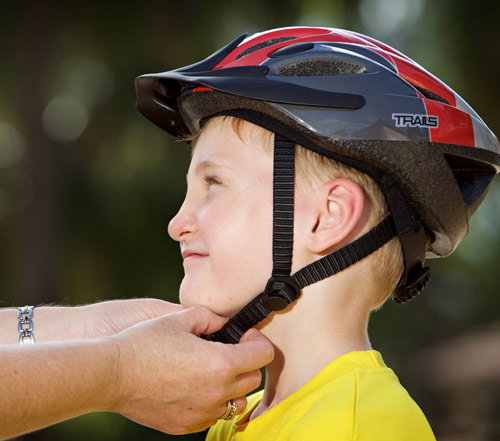 At school, your child will learn about road safety as part of Personal Development, Health and Physical Education. Help them learn the safety on wheels messages by reinforcing them whenever you are out and about.
At school, your child will learn about road safety as part of Personal Development, Health and Physical Education. Help them learn the safety on wheels messages by reinforcing them whenever you are out and about.
Students in Early Stage 1 to Stage 2
-
Always wear a helmet when you ride or skate
-
Ride your bike away from the road
Students in Stage 3
- Always wear a helmet when you ride or skate
-
Ride your bike away from busy roads
Find out more about keeping your child safe in the road enironment in our fact sheets.


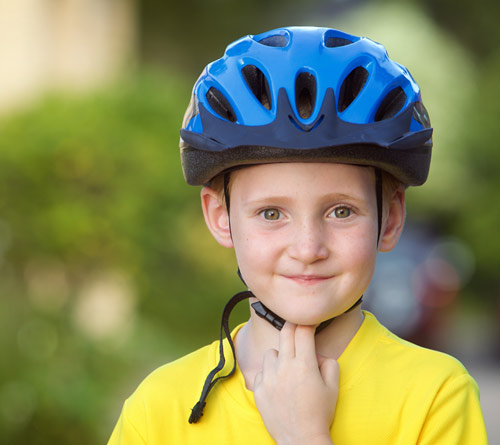 Research shows that helmets reduce head injuries by about 70 per cent and reduce fatal head injuries by 65 per cent. Wearing a helmet from the moment they start learning to ride will help your child to develop it as a habit and reduce the risk of head injuries.
Research shows that helmets reduce head injuries by about 70 per cent and reduce fatal head injuries by 65 per cent. Wearing a helmet from the moment they start learning to ride will help your child to develop it as a habit and reduce the risk of head injuries.
Early helmet wearers will also be more likely to continue to wear helmets throughout their life.
Your child must wear a helmet when riding a bike in a public place. It is the law. It is important that the helmet is correctly fitted and complies with Australian or overseas standards. A helmet that is not correctly fitted and fastened does not provide enough protection in a crash.
Choosing and using a helmet
- Always choose an approved helmet that complies with Australian or overseas standards.
- Pick a helmet with a bright colour so it can easily be seen.
- Choose the right size so it doesn’t cover your child's eyes or ears.
- Look for a light weight helmet with adjustable straps and fitting system.
- Avoid attaching anything to the helmet.
- Never wear a damaged helmet.
The Centre for Road Safety website has detailed information on selecting and fitting helmets.
At school, your child will learn about road safety as part of Personal Development, Health and Physical Education. Help them learn safety on wheels messages by using and sharing them whenever you are riding together.
Students in Early Stage 1 to Stage 2
- Always wear a helmet when you ride or skate
- Ride your bike away from the road
Students in Stage 3
- Always wear a helmet when you ride or skate
- Ride your bike away from busy roads
Find out more about keeping your child safe in the road enironment in our fact sheets.


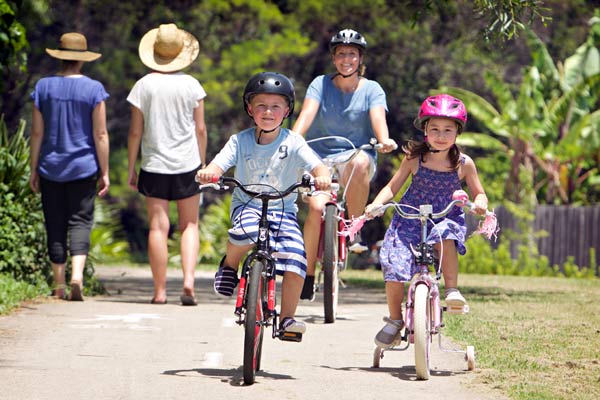 Until they are at least 10 years old, your child should ride off-road away from vehicles and driveways. While your child may learn skills such as balancing, pedalling and steering quite easily, they are still learning skills that help them to judge speed, distance and the direction of sound. Your young child will often ride with their head down, concentrating on pedalling, not the environment around them. Your child needs ongoing adult help in safe, off-road locations to gradually develop all their skills.
Until they are at least 10 years old, your child should ride off-road away from vehicles and driveways. While your child may learn skills such as balancing, pedalling and steering quite easily, they are still learning skills that help them to judge speed, distance and the direction of sound. Your young child will often ride with their head down, concentrating on pedalling, not the environment around them. Your child needs ongoing adult help in safe, off-road locations to gradually develop all their skills.
Your older child may want to ride to and from school. This helps to ease traffic congestion, reduce your carbon footprint and promotes physical activty. Consider whether the infrastructure in your area supports your child riding safely to school. Also, check with your school about their guidelines for students riding to and from school. More information about safe cycling and cycleway corridors is available on Active Transport.
The safest places to ride bikes, scooters and skateboards are within fenced areas. This helps prevent your child from riding or falling onto the footpath or the road.
Children aged between 10 and 12 should ride away from busy roads.
Children under 16 and adult riders accompanying and supervising them may ride on the footpath, unless there are signs specifically prohibiting cycling.
When riding on the footpath, cyclists must keep to the left and give way to pedestrians. On shared paths, riders are encouraged to leave a metre of space, where possible. Your child also needs to take special care at driveways where vehicles may be driving in or out.
Plan your route using quieter streets, bicycle paths or shared paths, if possible. At intersections, your child and adult riders accompanying them, must dismount and wheel the bike and cross the road as a pedestrian.
E-bikes
Bicycles that meet the requirements for permitted e-bikes can be used on public roads and road-related areas. Find out more about the rules for children in our fact sheet E-bikes: Advice for families
Find out more about keeping your child safe in the road enironment in our fact sheets.


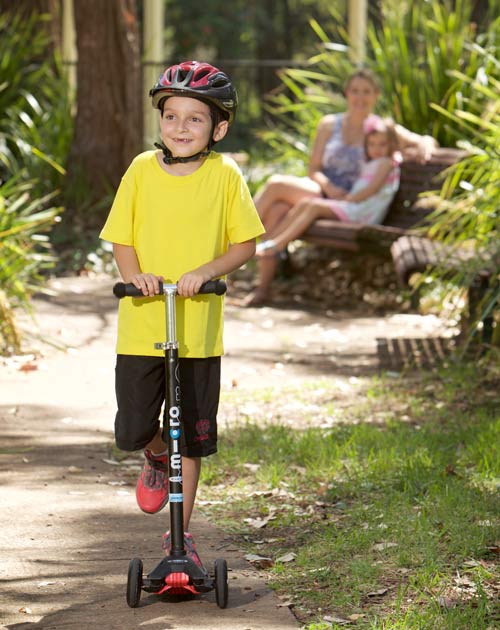 Foot scooter, skateboard and rollerblade riders should always wear an approved helmet, properly fitted and fastened, as well as protective pads on their knees and elbows.
Foot scooter, skateboard and rollerblade riders should always wear an approved helmet, properly fitted and fastened, as well as protective pads on their knees and elbows.
Bicycle helmets with a standards approved sticker, properly fitted and fastened provide the best head protection.
Remind your child to be considerate of pedestrians. Your child should keep to the left and ride in a courteous manner that does not cause other road users to react suddenly. They need to slow down or walk in busy areas.
Your child will be more visible wearing bright, light coloured or reflective clothing. They should ride in a safe place off-road and away from vehicles and driveways.
Your child should avoid using foot scooters, skateboards and rollerblades in car parks and on roads.
E-scooters
Personal e-scooters remain illegal on NSW roads and road-related areas, including footpaths, shared paths and bicycle lanes.
Find out more about the rules for children in our fact sheet E-scooters: Advice for families
Find out more about keeping your child safe in the road enironment in our fact sheets.
Dropping off and picking up at school


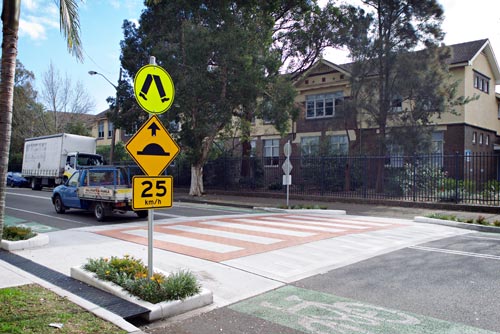 The beginning and end of the school day are busy times for pedestrians and vehicles outside schools. Parking signs are planned with your child's safety in mind.
The beginning and end of the school day are busy times for pedestrians and vehicles outside schools. Parking signs are planned with your child's safety in mind.
It is helpful for everyone if you park safely, even if you have to walk further to the school gate. This is a good time to model positive road safety behaviour and physical activity for your child.
Slow down near any crossings around the school. At a supervised crossing, follow the directions of the school crossing supervisor. Crossing supervisors manage traffic to help primary school children use the crossings on roads near and outside of schools.
Drop your child off and pick them up on the school side of the road. Calling out to them from across the road is dangerous – they may run to you without checking for traffic. This will help keep all children as safe as possible during the busiest times of the school day.
You should always:
- park legally
- avoid dangerous manoeuvers such as U-turns and three-point turns
- give way to pedestrians, particularly when entering or exiting driveways
- avoid using the school car park or driveway
- avoid parking in the school bus bay
- make sure your child uses the Safety Door (rear kerb-side door) to get in and out of the car.
Dangerous driving behaviour around schools puts children at risk.
Model safe and considerate behaviour for your child – they will learn from you.
Find out more about keeping your child safe in the road enironment in our fact sheets.


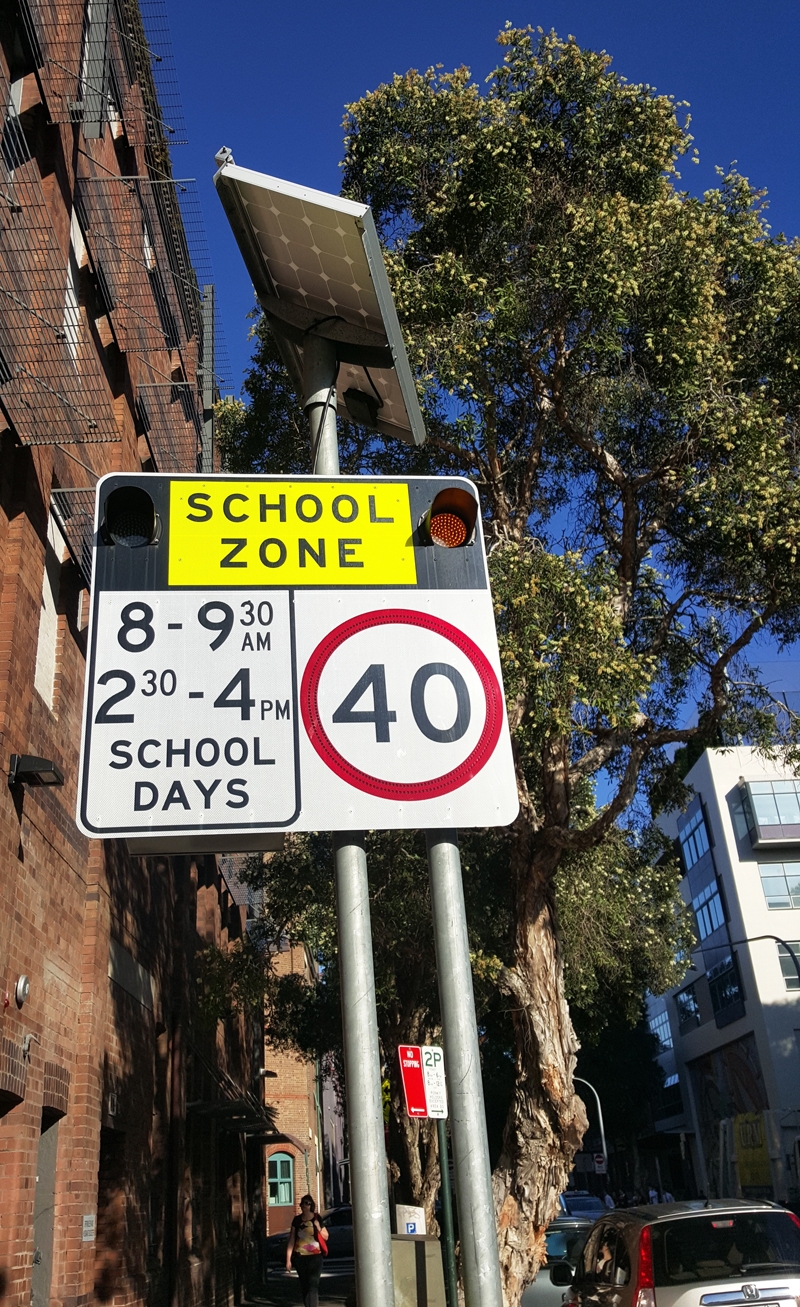 The 40km/h school zones operate at all school sites on gazetted school days, including school development days. The 40km/h school zone slows traffic around schools. The 40km/h speed limit must be observed, even if school children cannot be seen.
The 40km/h school zones operate at all school sites on gazetted school days, including school development days. The 40km/h school zone slows traffic around schools. The 40km/h speed limit must be observed, even if school children cannot be seen.
Most school zones operate from 8am to 9.30am and from 2.30pm to 4pm on gazetted school days.
There are a small number of non-standard school zone times in NSW. They are identified by red/orange school zone signs to show non-standard times. Signs at these schools show the times that apply.
All NSW schools have school zone flashing lights to warn drivers that they must slow down to 40 km/h. Drivers caught speeding in school zones during double demerit periods face more severe penalties. The Centre for Road Safety website lists the publically notified school days in NSW.
Find out more about keeping your child safe in the road enironment in our fact sheets.


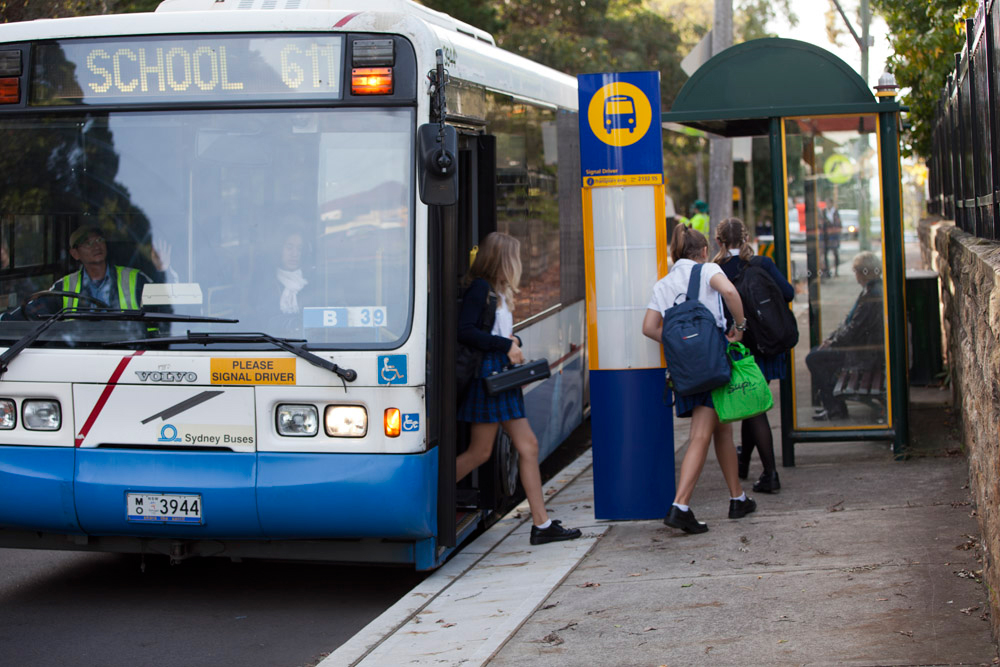 A 40 km/h speed limit applies to traffic passing a school bus that is setting down or picking up school children. This speed limit is for all traffic travelling in the same direction as the bus, whether the bus is stationary or moving.
A 40 km/h speed limit applies to traffic passing a school bus that is setting down or picking up school children. This speed limit is for all traffic travelling in the same direction as the bus, whether the bus is stationary or moving.
You must obey the 40km/h speed limit when the rear wig-wag lights on the bus flash. Flashing lights on the front of buses also warn oncoming motorists that children are close by.
Buses are large, heavy vehicles. They can't stop quickly, therefore, when you are driving, you should:
- reduce speed to 40 km/h when bus lights are flashing
- give way to buses
- watch for children crossing
- not merge too closely in front of buses
- never park in or near a bus stop or bus zone.
Find out more about keeping your child safe in the road enironment in our fact sheets.
Driveway safety


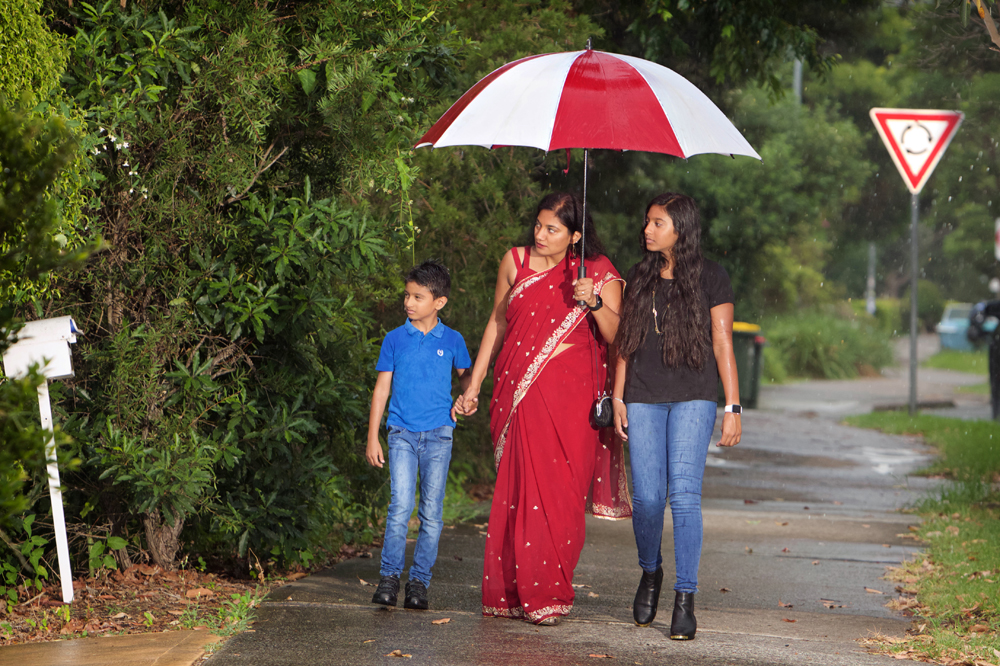 On average, more than five children are killed and 47 seriously injured in driveways each year across Australia.
On average, more than five children are killed and 47 seriously injured in driveways each year across Australia.
In NSW, six children have been killed and 15 seriously injured in driveways since January 2013.
We all have a role to play when it comes to driveway safety.
Your young child counts on you to supervise them near vehicles, separate play areas from driveways and see where they are at all times.
Remember to:
- Supervise
When your child is around driveways, they should be actively supervised by an adult who is holding their hand. Ensure that young children are placed securely in a vehicle before moving it. - Separate
Treat the driveway like a road. Do not let your child use the driveway as a play area. Separate play spaces from garages and driveways. Home features including fences, high handles on garage doors and self-closing doors or gates can help. - See
All vehicles have blind spots. Even though reversing sensors and cameras can help reduce blind spots, it can still be hard to see a small child until it is too late. Do not become complacent. Get into the habit of walking around your vehicle before starting it, especially when leaving an area where a young child could be present.
Watch TV personality Scott Cam in our video, Driveway Safety - They’re Counting On You.